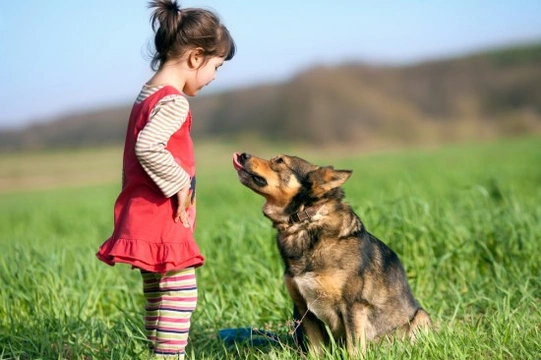
How to speak to your dog
Many of us enjoy talking to our dogs in everyday conversation, and most dog owners have thought at some point how much easier life would be if our dogs spoke the same language as we do! Unfortunately, your dog is not likely to understand the exact meaning of your words in the same way that other people will understand them, but this does not mean that they will not get the gist of what you are saying!
When communicating with dogs, the understandings that they glean from your words come down to a whole range of factors. These include the tone of your voice, what your body language is saying, and a basic understanding of some of the clearer spoken sounds that we use, such as short, unique words like “no.”
If you are wondering if you are communicating with your dog effectively and how you can become a better communicator when dealing verbally with your dog, read on for some tips.
Restrict yourself to three tones of voice
The tone of voice that you use with your dog is the clearest way in which your dog will get a feeling for your mood and what you are asking from them, and it is important to relay this message as clearly as possible. Restrict yourself to using just three different tones of voice when dealing with your dog, to ensure that your message doesn’t get lost in translation. The three tones that you should aim to perfect are encouraging, for praise, reward and to entice your dog to do something; firm, for a command or to get your dog’s attention; and sharp, if you need to chastise your dog.
Practice!
Even when you have your three tones of voice down to pat, it is important to practice them and work with your dog’s reactions so that you can moderate your tone to suit different situations.
For instance, your encouraging tone should be moderated when you are trying to coax your dog to do something, but can be excitable and happy when rewarding your dog or encouraging them to play. Your firm tone should be sufficient to get your dog’s attention and make them concentrate on you, but not startle your dog, or cause them to confuse it with your sharp tone.
Your sharp tone needs to get across the message that you are displeased and want your dog to stop what they are doing, but it should never frighten your dog or cause them to be alarmed.
Different tones for different situations
Some commands and events may provide you with a range of choices as to what tone to use for what command. For instance, if you wish to call your dog to you, your tone should be encouraging and enthusiastic, but if your dog ignores you once you have asked them a couple of times, you might need to switch up a gear to your firm tone. Remember never to use a sharp tone for any command or activity that requires an action or compliance, such as to come, but only to stop or pause your dog when they are doing something wrong.
Use consistent words
Dogs recognise words and commands due to the tone that they are spoken in, and also, the plosive or distinctive sounds that they make. Therefore, it is important to ensure that you do not use two similar-sounding words for different commands, such as “no,” and “go,” for instance, as not all dogs are able to adequately decode these. Your dog’s name too should be unique, and not similar to the name of anyone else in the family, or any of the commands that you use.
Short words and commands always work better on dogs than multiple syllable words or complex chains, so try to make things simple where possible; for instance, we universally say “sit” rather than “sit down,” as the meaning is clearer to your dog when using the former.
Do not use interchangeable phrases or words to describe the same situation; for instance, if you wish to tell your dog that it is time for their meal, use “dinner time” or “time to eat!” and not both at different times.
Body language and facial expression
Your dog will look to you for direction in a whole host of different situations, and they will automatically respond to your body language quicker than they will to a spoken command, so bear this in mind!
If you have been calling your dog to come and they are not complying, you are probably beginning to get frustrated, and even if you keep your tone light and cheery, your dog will soon spot tense body language and a frowning face, which will serve to give them mixed signals.
Ensure that your body language, facial expression, words and tone are all speaking the same language; this will not only serve to make your message clearer to your dog, but also give you a much better chance of gaining their compliance.



